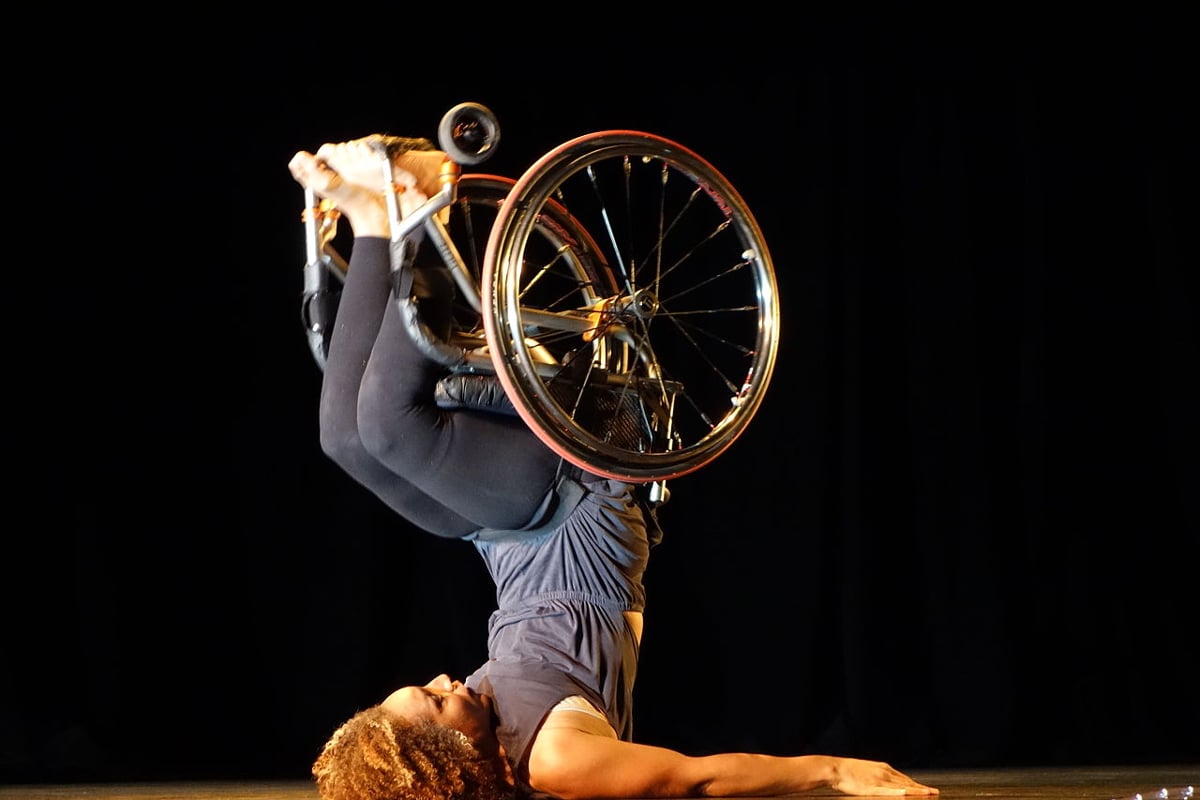
Photo: KevinIrvineChi
Equity advocates for diverse dancer opportunities
Trade union’s new guide provides advice to dance companies on how to reach diverse talent, making auditions and rehearsals accessible and optimising choreography and communication.
Equity has published a new casting guide for dance companies that provides advice on finding, hiring and working with Deaf, disabled and neurodiverse dancers.
Launched at the Edinburgh Fringe Festival, the guide was written by Annie Hanauer, a member of Equity’s Dance Committee, in collaboration with both the Dance and the Deaf and Disabled Members Committees.
It details how to avoid discrimination of Deaf, disabled and neurodiverse dancers, how to embed accessible practices and how to optimise work methods such as choreography and communication.
READ MORE:
- Win-win for disabled arts-lovers and the sector
- Half of disabled music workers don’t disclose conditions
“As an established disabled dancer and choreographer, I hope this guide can be a tool to support equity in our workforce and create more opportunities for the many talented Deaf, disabled and neurodivergent artists out there,” Hanauer said.
“In my experience of working with other Deaf, disabled and neurodivergent dance artists, opening our working practices to a wider range of perspectives and ways of moving creates exciting new possibilities and ultimately creates a richer and more vibrant art form.
“For employers out there – working with access and inclusion is achievable, it's exciting, and I hope this guide can help you start.”
A rich community
'The UK has an extremely rich community of talented and experienced dance artists who identify as Deaf, disabled, and/or neurodivergent,' the guide states.
'You will find them working across all areas of the sector: as dancers, choreographers, teachers, company directors and beyond.'
It advises that many of these artists deal with 'attitudinal, infrastructural and environmental barriers' on a daily basis and most 'will have experienced discrimination in their workplace, within their educational institutions and training and throughout the process of finding work, being hired and fulfilling contracts'.
Finding and supporting the work of Deaf, disabled, and neurodiverse talent 'does not need to be complicated, expensive or time-consuming', the guide says.
'By embedding accessible practices within your working process from the start, it can become second nature, allowing you to engage with a wider circle of artists and to expand your audience.'
The aim of the guide is not only to advise individual companies on how to cast more diverse artists but to encourage them to collaborate with other progressive dance companies to advance inclusive working practices across the sector.
“This guide is a vital resource for the dance and wider arts sector and gives us the information we need to work with and champion disabled creatives,” said Cathy Waller, disabled choreographer and Artistic Director of dance company Cathy Waller Co.
“Not only does the overlooking of disabled dancers and artists dangerously erode away opportunities, it also negatively impacts the dance sector’s own success in creating high-quality and innovative work that represents both its audience and the beautiful diversity of our world.”
Intention and accessibility
The guide calls for casting teams to think about their intentions when hiring Deaf, disabled or neurodiverse talent and ensure that they are not driven by performative inclusivity or 'optics'.
'Treat each artist with respect and do not employ people as a tokenistic gesture,' it says.
When it comes to access, companies should understand that needs in a creative team may be conflicting. 'Access is not only the territory of disabled people: every person has access needs and some differ considerably to others,' it says.
Recruiting staff should view creating access as 'an active and ongoing conversation, not a checklist which is finished, or solved once an artist is hired'. Access support should be discussed during a call-out, an audition, in the contracting stage, during rehearsals and during performances.
'If it feels tricky to meet everyone’s needs fully, don’t give up, look for solutions with your team, be realistic about when access needs can’t be met and try to flex to support the entire team as much as possible,' the guide says.
'Be transparent about what access needs you can support and any you are unable to meet.'
Tips include making call outs available in different accessible formats, including video with British Sign Language and captioning, audio description, large print and easy read, and holding auditions and rehearsals in an accessible space or online.
The guide also offers advice about how to approach choreography when working with disabled dancers, respecting 'each artist as the expert of their own body and needs'.
Suggestions include opening choreography by creating movement tasks that allow space for dancers’ interpretations and movements and encouraging dancers to adapt material to suit their own bodies and paces of learning.
Additional support
Extra support for Deaf, disabled or neurodiverse dancers could include hiring access workers such as BSL interpreters, mental health support and touring assistants. Companies are advised to apply to the Access to Work fund, which may cover some or all additional costs.
The guide also provides recommendations and links to additional resources, groups and information that may be useful to companies aiming to increase the diversity of their workforces.
Anita Clark, director of The Work Room dance company, said that the guide contains “brilliant, practical information” on improving inclusivity that will “expand audiences' experiences of dance”.
“At The Work Room, we recognise that there are systemic inequalities in dance and relish our responsibility to ensure an expansive range of dance artists and practices are visible and supported,” she said.
“Our approach is rooted in artistic development and continues to evolve as an artform through the diversity of creative voices and physicalities influencing development.”
Join the Discussion
You must be logged in to post a comment.